Gardenia: the best tips for caring for a potted flower
For those living in China, Japan and other Asian countries with a hot and humid climate, gardenia is familiar, as it is found in the wild and attracts with its decorativeness. In the gardens of the emperors, gardenia bushes, covered with flowers of pure white or cream tones with an exquisite aroma, were given pride of place. In countries with temperate climates, this flower has firmly taken its place on window sills, indoors thanks to the American biologist Alexander Garden. There are more than 250 species of this plant in the world.
Content:
- Acquaintance with the types of gardenia, their description
- Reproduction and planting features
- Creating conditions for growing a houseplant
- Gardenia care tips
- Factors interfering with the growth of gardenia
Acquaintance with the types of gardenia, their description
The most common type of gardenia is jasmine. This evergreen low shrub grows in greenhouses and indoors, reaching a height of at least half a meter. Long oval leaves of a dark green hue, pointed at the base, cover the bare trunk. On the apical part of the shoots, single flowers usually appear in the middle of summer or three in inflorescences.
Florists paid attention and spread several forms of gardenia, which are distinguished by large fragrant terry flowers:
- The Fortuna variety is characterized by flowers similar to camellias, large up to ten centimeters in diameter.
- The flowers of the Mystery are distinguished by long flowering.
- Gardenia Carinata can be recognized by the single flowers that change their tone, from snow-white to yellow-lemon to orange.
- The Tahitian gardenia has flowers of huge sizes, double and simple in shape, and it is covered with them, when it pleases, spontaneously.
- Gardenia Thunberg is named after the famous naturalist. In this species, narrow leaves grow at the ends of bare branches. But the flowers amaze with their aroma, which intensifies towards the night. They emerge from creamy green buds, twisted in an intricate way. The species is quite unpretentious and hardy, therefore it is used for rootstock.
Some gardenia species thrive in gardens where the climate is ideal for them.
Reproduction and planting features
Any plant has an aging period and needs to be renewed. To do this, use the rooting method cuttingswhich is simple, effective and for gardenia propagation.
When the bush fades, branches are cut from it, which are not at the growth stage, but have already ripened. It is imperative to take an apical stalk with a heel, that is, with a piece of wood, then rooting will go easier. The mother plant from which the cutting is cut must be healthy and resistant to unfavorable factors.
On the prepared branch, there must be at least six buds.
It is best to root the cuttings in the ground, but if we use water for this, then one or two tablets of activated carbon must be put in it to avoid decay of the liquid.
Now let's see which soil substrate is most useful:
- A mixture of the same amount of peat and sand, to which a little sphagnum is added, is best suited.
- Moss has the property of making the soil loose, absorbing moisture well, and then when transplant plants a lump of earth on the roots will hold on tightly.
- The next step is soil disinfection, which can be done in a microwave oven or in a saucepan over a fire. With such sterilization, microbes, fungi, seeds are destroyed in the substrate. weeds.
Now you can place cuttings cut at an oblique angle, previously lowered into Kornevin, in a glass with soil. It is imperative to create a greenhouse effect for the sprouts by covering the containers with a film. High humidity conditions activate the appearance root system gardenia. And then they already transplant it into a pot, where the substrate will contain not only sand and peat, but also coniferous soil. The last stage is pinching the cuttings when they reach fifteen centimeters in height. The resulting new plant will grow stronger and bloom under certain conditions.
Creating conditions for growing a houseplant
Knowing the homeland of growing a decorative flower, you can create similar conditions on the windowsills of your home:
- Gardenia lives in the wild in the southern regions of Asia and Africa, where it is always hot. For flowering bushes, the temperature is considered optimal in warm periods of at least 25 degrees, and in winter - 20. At low temperatures, gardenia will not bloom: it is very afraid of sudden changes in air temperature.
- In the subtropics, the humidity is quite high, and for an indoor flower you need to create it indoors. Frequent spraying, especially during bud formation. But for flowers, souls can become destructive, we must try to prevent water from getting on them. They also put wet moss or sand in the trays of gardenia pots, keeping it so wet all the time.
- The sun's rays are beneficial for the growth of a houseplant, so window sills from the west, east or south side are suitable for it. But with flowering gardenia needs to be shaded from the scorching ultraviolet radiation. And there is no need to rearrange flower pots from one window to another - the plant will drop its buds. In winter, if there is little lighting for the plant, then an additional one is created in the form of fluorescent lamps.
If the conditions of the subtropics are created, then the gardenia will repay only with gratitude - it will be covered with fragrant white flowers.
Gardenia care tips
Now about the tips of gardeners for gardenia care:
- Although a tropical plant loves humidity, it should be watered abundantly in summer and spring, up to three times a week, and in the cold season - in moderation. Not any water is suitable for this procedure, but warm and best of all, settled or purified with a filter. If the soil lacks acidity, then the water for glaze you can drop a little lemon juice by diluting a liter of water with iron sulfate with half a gram. Water infused with peat is also recommended to acidify the soil.
- Top dressing of decorative bushes will be needed twice a month, either organic or mineral fertilizers... Peat-humic substrates are also well perceived. With a lack of iron, when suddenly the leaves begin to turn yellow, you can spray the crown with a weak solution of metal sulfate.
- Transplant gardenia is easy to tolerate, so once every two years you can carry out this procedure in March or immediately after the plant has bloomed. Having passed the decorative bush together with a lump of earth on the roots into another pot, then the soil is poured to the desired level.
- Another procedure that gardenia cannot do without is pruning bushes for a third or half of the shoots. Removing weak and thickened twigs makes the plant strong. And the pinching of the tops of the young growth leads to the active appearance of new lateral branches and flower buds.
Although they consider the gardenia jasmine capricious, all types of caring for it are easy to understand and do not take much time.
Factors interfering with the growth of gardenia
Indifference to caring for the plant leads to problems that arise when growing gardenia:
- Wrong wateringwhen the water stagnates or, conversely, the soil is too dry, causes a malfunction in the root system, it begins to get sick. And a signal about this will appear as yellow spots on the leaves. Another reason for the yellowing of foliage is a lack of iron in the plant's body. And here it will help feeding with Ferovit.
- If the temperature regime and irrigation rules, illumination are not observed, the buds, appearing on the branches, begin to fall off. The period of emergence and development of buds is most important for gardenia, and any deviation from the norm in the care and growing conditions will affect their condition.
- Dry hot weather with low air humidity can lead to the fact that the buds do not appear on the gardenia bushes at all.
Of the pests, aphids, thrips, mealbugs, scale insects, spider mites especially bring a lot of trouble to the indoor flower. These insects most often infect the leaves of a flowering plant, sometimes they can also be found on the buds.
More information can be found in the video:
Pests and control of them:
- Aphid feeds on plant juices, especially loves fragrant flowering gardenia bushes. These parasites invisible to the naked eye attract others pestsfor example, ants that feed on honeydew produced by aphid colonies. They especially love weak shoots, so you need to cut them out in time. Washing the plant in the shower using laundry soap and brushing it on the leaves will kill the aphids.
- It is much more difficult to fight a spider mite. And here it is necessary to influence the eggs, which the female lays in large quantities, otherwise the mites that appear can go into the soil and harm the gardenia for five years. Signs of a tick attack - leaves covered with cobwebs, white dots on them and buds. In addition, the pest spreads spores of fungal infections, so it is necessary to deal with it in effective ways. This spraying with Intavir, Karbofos, washing the leaves with soapy water.
- It is not difficult to notice the scale insect adhering to the leaf, although it is very small. And if the leaves become sticky and shiny, then it means that the fight against the pest will be difficult and long. Sometimes even carrying out treatments for a week with poisonous chemicals such as Actellik does not always help. Wipe the leaves with a damp cloth, remove dried twigs on time - these are real methods of preventing infection.
Careful attention to gardenia will help to avoid risk factors that can destroy the indoor flower.



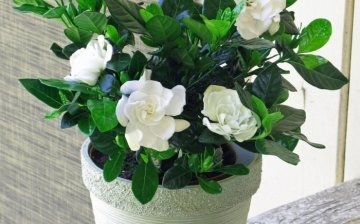
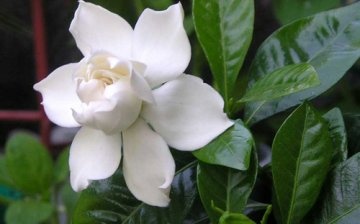
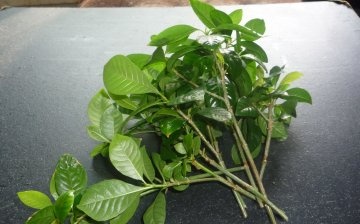
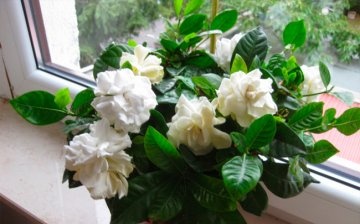
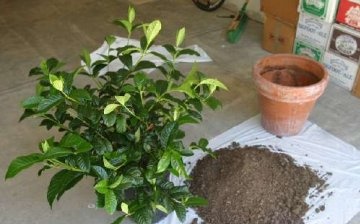
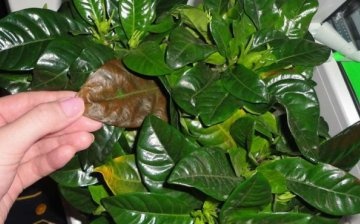






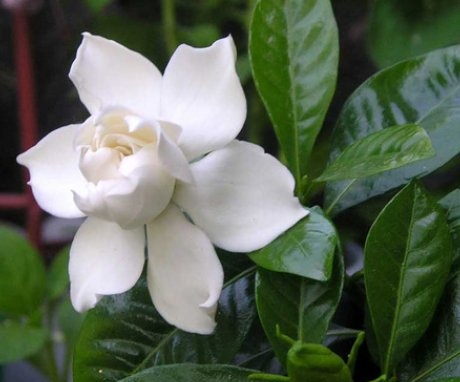
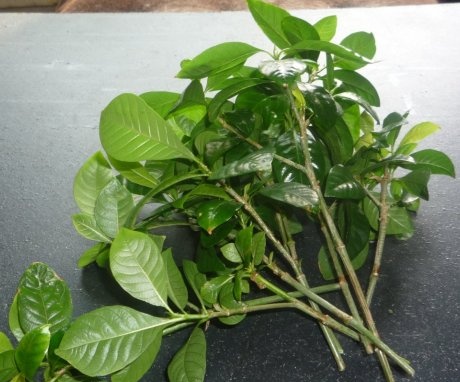

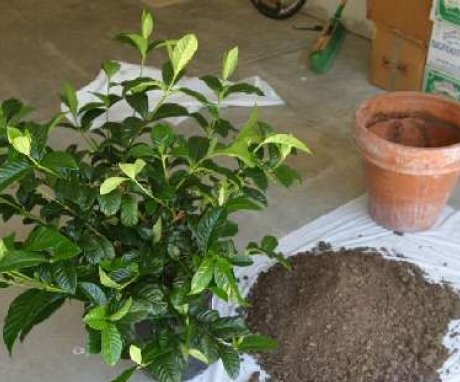
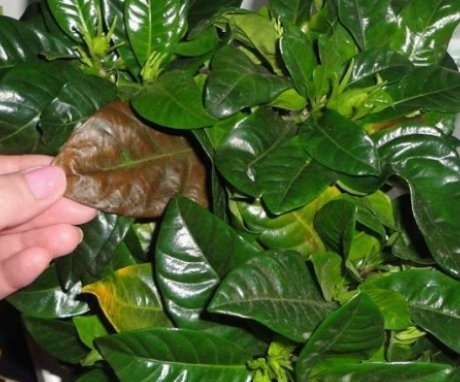
For me, a difficult flower, I bought it three times and did not take root with me. Half a year is a maximum and the leaves begin to turn yellow and fall off, and fertilize and create all the conditions that are written, they do not want to live with me.